Day 6 (evening) and Day 7 - Cusco
Cuzco (or Cusco) was the capital of the enormous Incan empire which included modern day Peru, Ecuador, Bolivia, and northern Chile. Its population now about 500,000. It was the Peruvian capital until 1533 when it was conquered by the Spanish. It is at the same time, a modern city, complete with Starbucks, KFC, Patagonia and other upscale stores and restaurants, yet has a rich Incan influence and most of its population is Incan. This creates some dichotomies, especially religious ones. Most residents are Catholic, going to Church in the early morning on Sunday, then going up the mountain to worship the Incan gods of Mother Earth, etc. in the afternoon.
We arrived in Cusco after a long, bumpy drive after a long train ride at about 6:00 pm and checked into the Belmond Monasterio Hotel, sister of the one we stayed at in Machu Picchu. We were greeted with warm wash-cloths, and a continuous recording of Gregorian chants. It was indeed a former Monastery with gorgeous landscaped courtyards, religious pictures in every room, many old mirrors on the walls, great food and impeccable service. It also located on a tiny narrow street (two-way, but couldn’t accommodate two cars side by side) so we had to transfer from our bus to two smaller vans to get there. A sister convent used to be next door, but both have been converted into more money making luxury tourist accommodations.
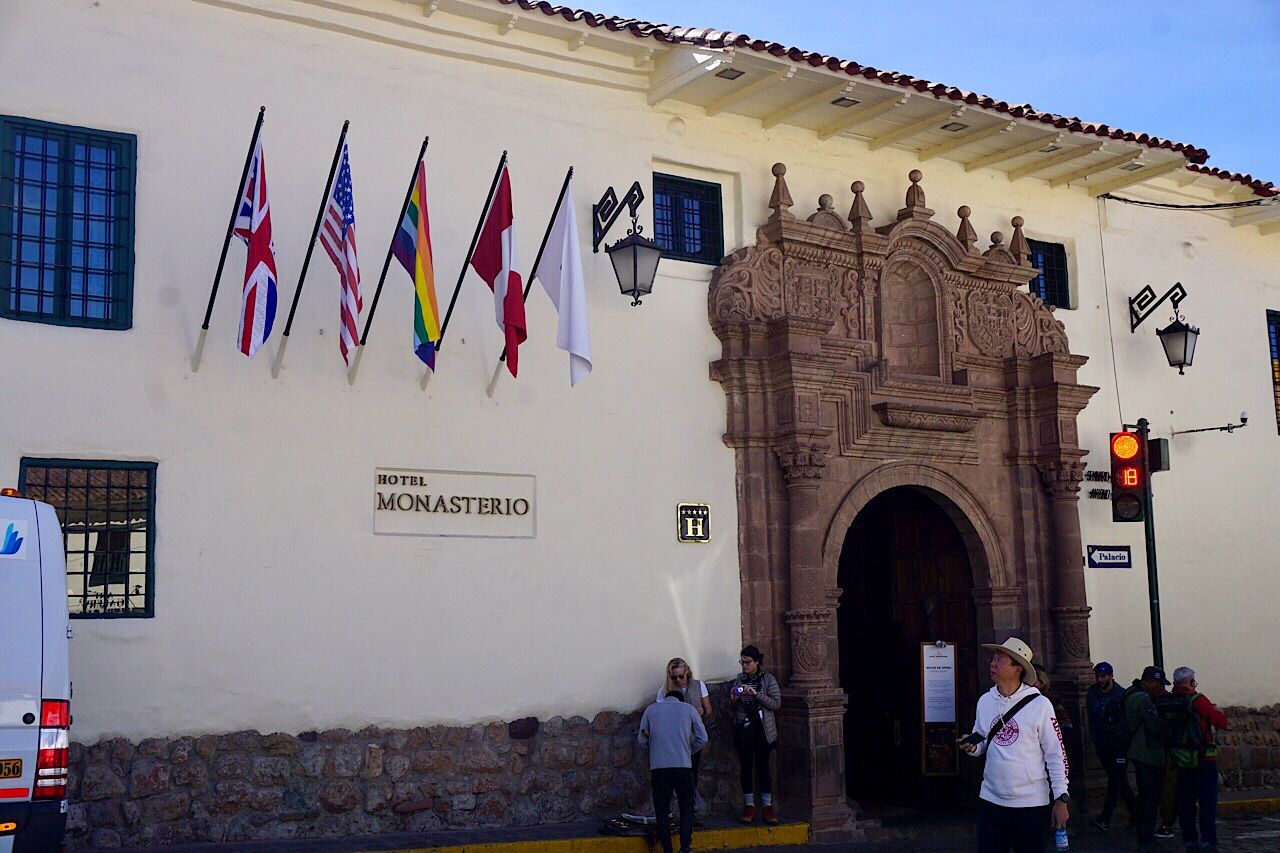
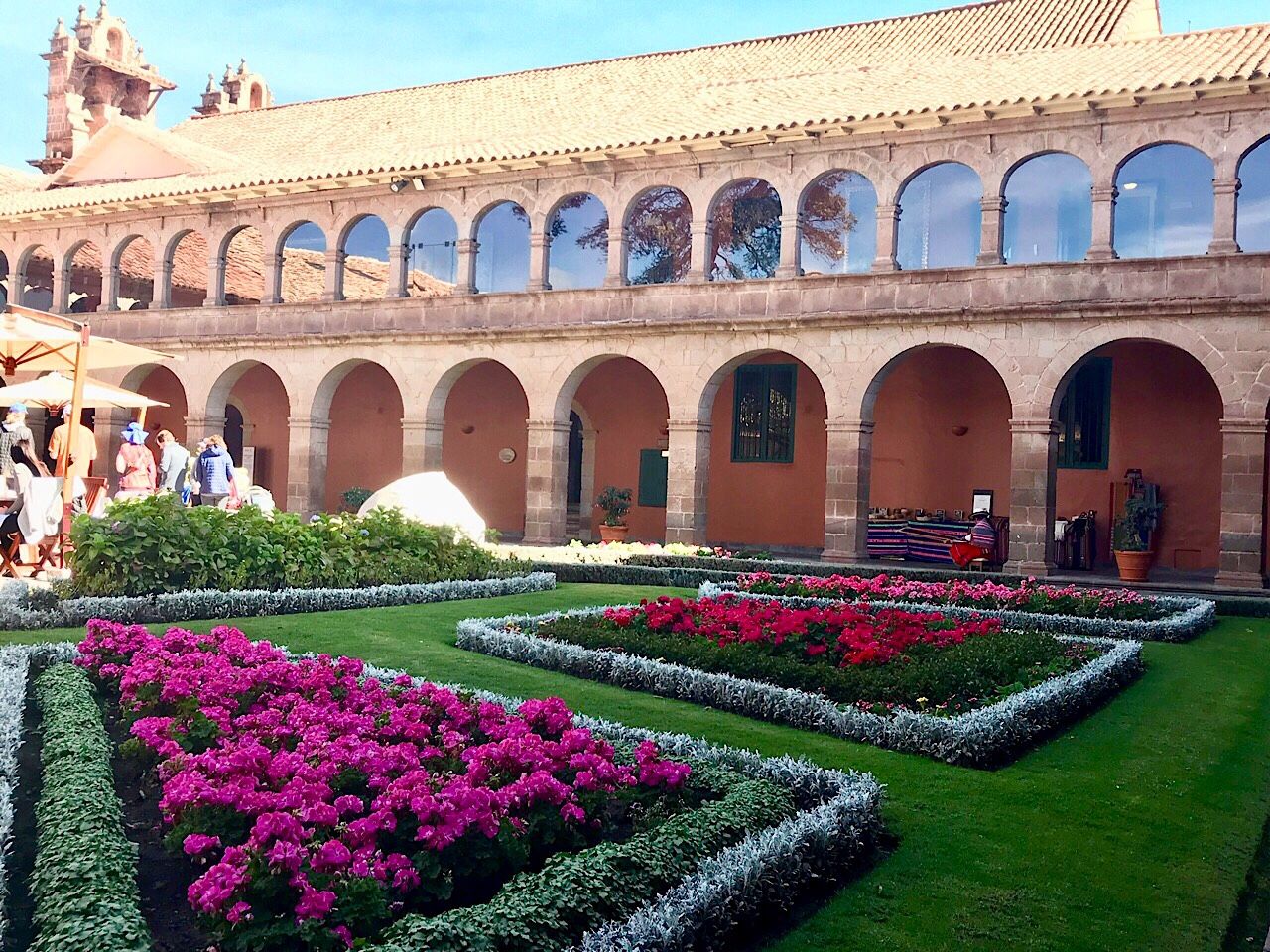
We walked down to the center square a few blocks away to the large square in the center of town where we found a nice place for dinner with our friends Larry and Eileen and enjoyed some Peruvian food. Back at the hotel, we re-organized all luggage (we had only been allowed to take carry-ons to Machu Picchu) and did some laundry.
A very full day on Tuesday, but thankfully, more laid back with some free time. We went on a walking tour of the center square area, called "Plaza de Armas" now seeing it in the daylight. It is filled with many stores, lovely houses,some with ornate balconies, and five churches. We explored two of them (no photos allowed inside unfortunately) - a 16th century cathedral with silver and gold alters, and many paintings of religious figures. The most famous, by the Cuscoan painter Zapata, is of the Last Supper. Here, Judas is Incan, and actually a disguised self-portrait of the painter. Traditional Incan foods are represented, and in the middle of the table is a cuy—a guinia pig which is a traditional Incan delicacy. (More on that later!). Trying to " put one over on the Spanish" who were clueless about most Incan customs and beliefs was, in large part, a perpetual goal of all of the Incans. The Spanish used paintings, statues, and other representations to "teach" the Incas who had no written language, about the beliefs of the church.
Wondering the square we also happened upon a group of schoolchildren practicing for a big local festival honoring the winter solstice on June 24. They were having fun dancing and re-enacting mock battles.



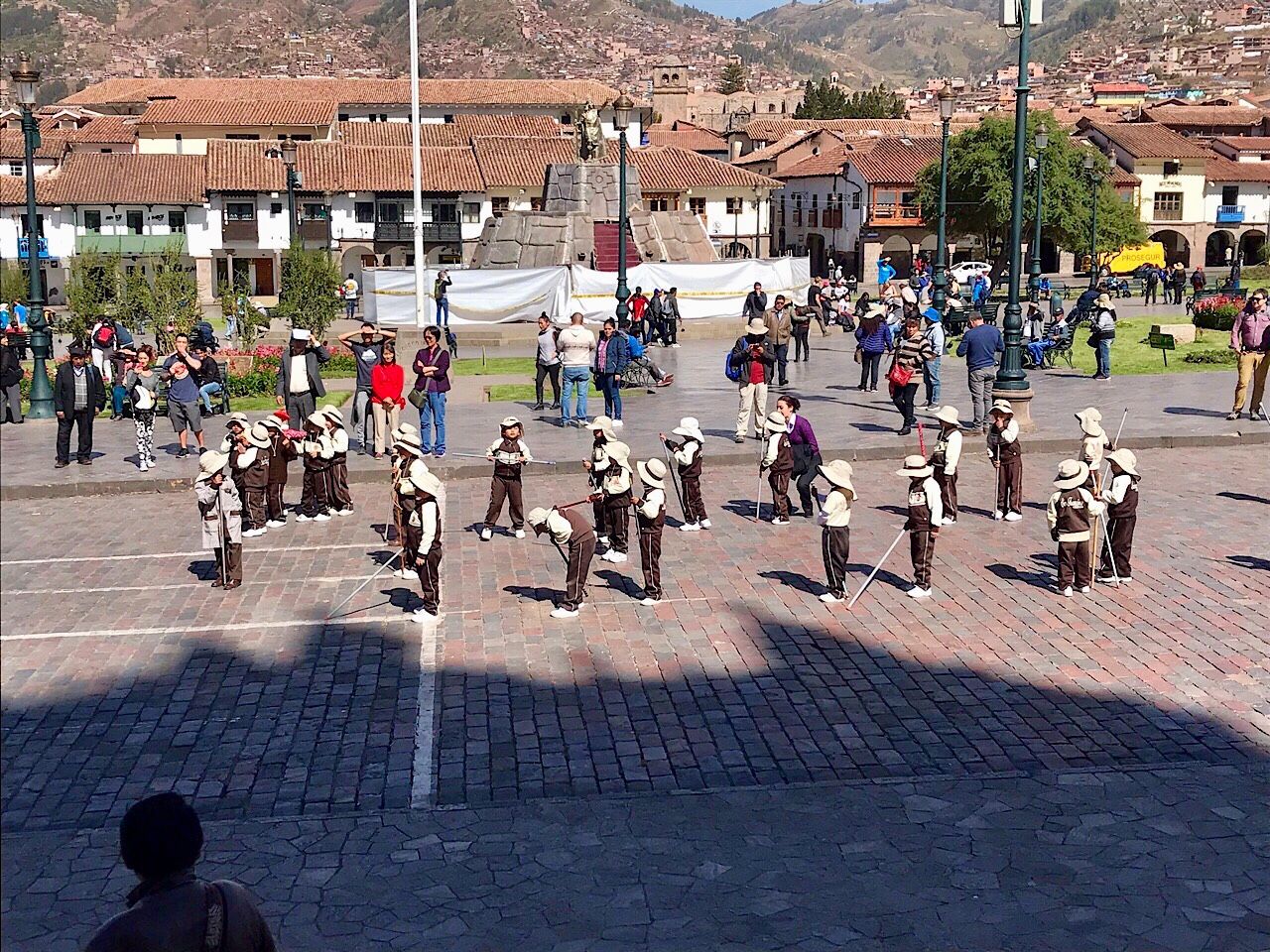
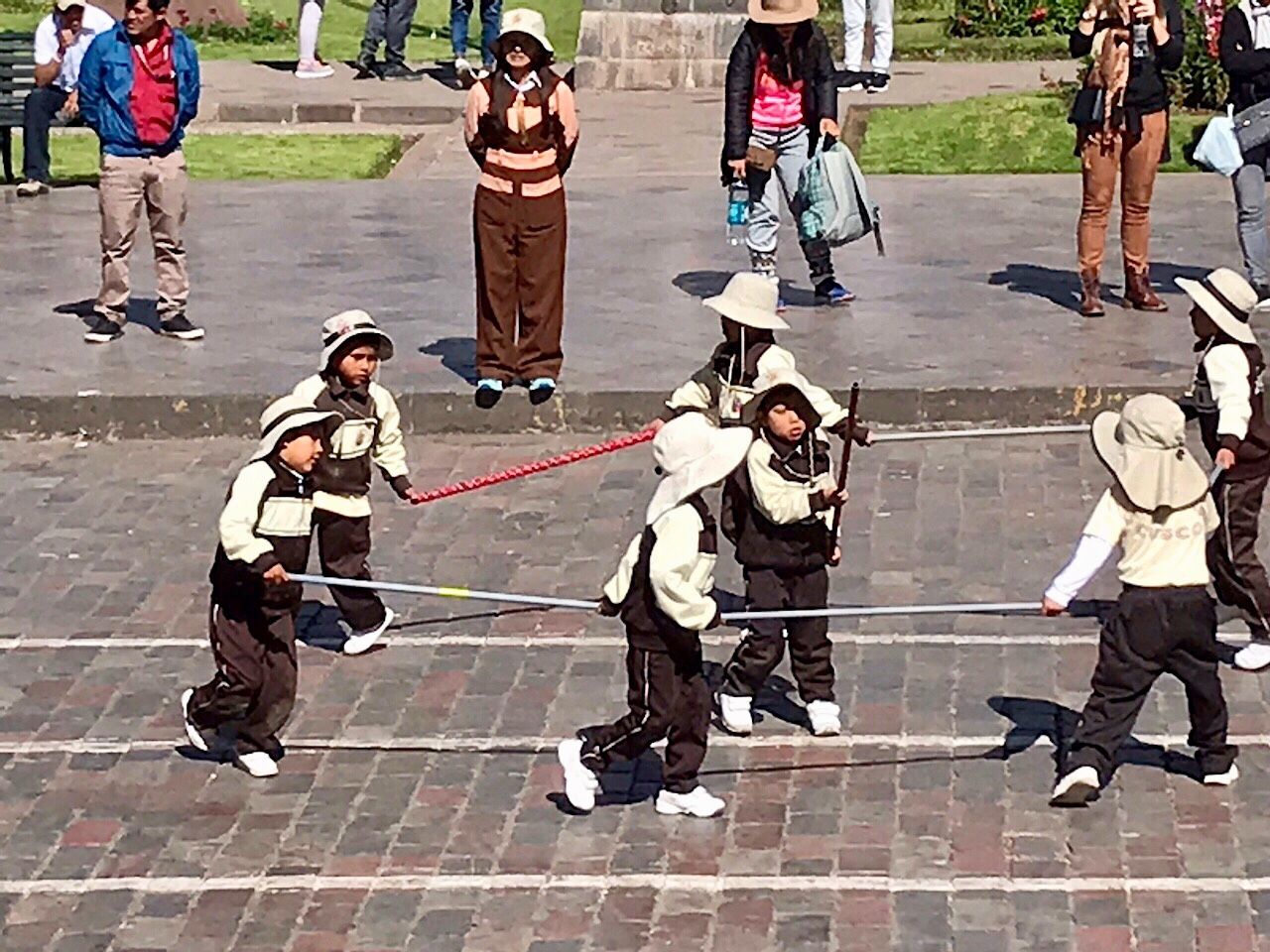
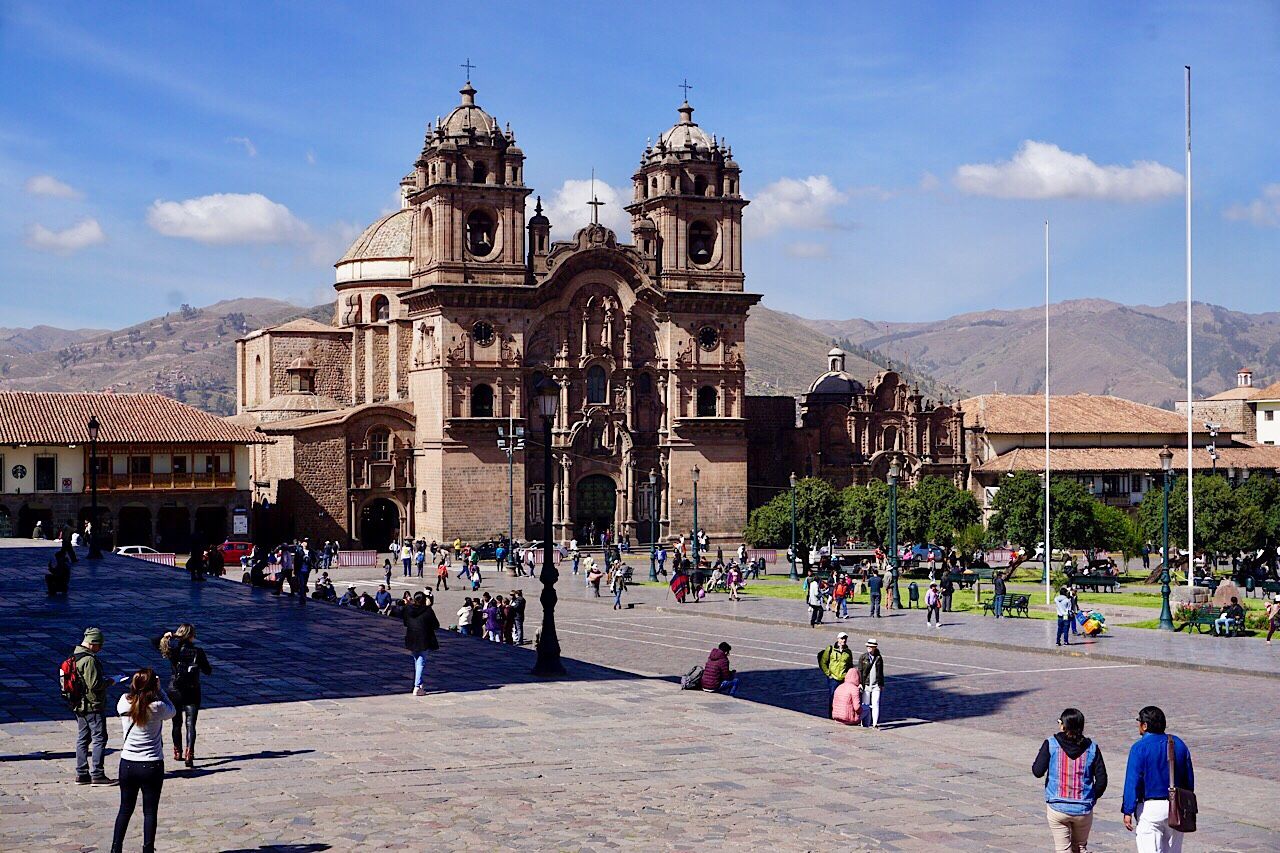


The second church, Santo Domingo was built upon the foundations of Koricancha, the Inca Temple of the sun. This site showcases remnants of the Incan’s ashlar masonry technique. Similar to what we had seen in Machu Picchu and elsewhere, they cleverly fitted similarly sized cuboid stones together to create strong walls and foundations without the benefit of sophisticated tools. We were constantly seeing examples of these walls in all the Incan ruins, and old walls of houses and stores. There were also numerous examples of the trapezoidal window openings and doors that are common to all Incan buildings.

Now a very interesting and entertaining part of our trip—lunch with a local family. Ours had 6 children and their father works for a subsidiary of Odysseys in Cusco. Food was presented beautifully with very typical Peruvian foods of corn, purple corn juice, potatoes, vegetable soup, meat stew,and, oh yes, guinia pig! This is a fairly expensive dish, saved for special occasions. Jim tried it and said it tasted like roasted pork. Wendy, who had many different guinia pigs as pets in her youth, declined.

Dinner came to a close, and we presented gifts that we were instructed to bring. I had bought candy and some Sarasota honey, but lucked out with the two Hot Wheel cars I had brought, hoping there would be kids. The families two youngest boys, who had just joined us after school were delighted!

The rest of the afternoon was on our own. Our guide Ernesto brought us to a local supermarket to buy salt, chocolate and, perhaps coffee. We got the first two, but the options for coffee was not to Jim’s liking. Wendy, hoping for an Incan style bracelet found one in a nice local jewelry store. After some light haggling, it is now a permanent reminder of our trip.
Dinner was at a local restaurant in the square where 12 out of the 20 of us descended (we had made reservations earlier). Lots of fun. Back to our room to pack and organize for our 4 am !!! wake-up call for a long day of traveling to Quito, Ecuador tomorrow.

comments powered by Disqus